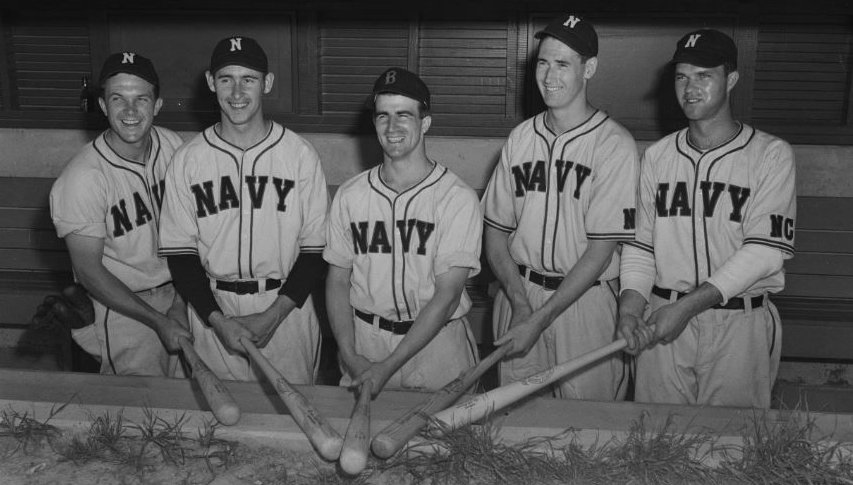World War II Chronicle: February 22, 1941
Click here for TODAY’S NEWSPAPER
Sports section starts on page 22, and Major League Baseball owners say they don’t want exemptions for any players who are drafted. The article mentions leftfielder Morrie Arnovich, recently sold to the New York Giants for $25,000 by the world champion Cincinnati Reds. Arnovich was classified I-B (available for limited service) for missing teeth, but will join the Army along with his brother Hyman after Pearl Harbor. He managed and played baseball for the Fort Lewis, Wash. team before serving in New Guinea and the Philippines. 35 years old in 1946, he plays one game with the Giants before ending his major league playing career.
Boston’s National League franchise dates back to 1876 and has gone by several names: the Red Stockings, Red Caps, just “Boston” or the Bostons, Beaneaters, Robins, Doves, and Braves. For the last five seasons they went by the Bees, but the Bees will go back to being called Braves this season. Casey Stengel is beginning his fourth season as Boston’s skipper, which is where he finished his major league playing career in 1925. For a little perspective, Stengel was as far removed from his playing days to readers in 1941 as Jeff Bagwell is to us in 2021.
Stengel and coach George “High Pockets” Kelly, both World War I veterans, now have three future Hall of Famers on the roster: Paul “Big Poison” Waner, Lloyd “Little Poison” Waner, and Earl Averill, but all are at least 35 years old. 40-year-old centerfielder Johnny Cooney is the third-oldest player in the league, behind Charlie Root and Gabby Hartnett. Cooney shared the outfield with Stengel when the Old Perfessor was still playing. Johnny and his brother Jimmy Jr. were teammates on the Braves in 1928, and their father, Jimmy Sr., played with Cap Anson on the Chicago White Stockings (today’s Chicago Cubs) in the 1890s.
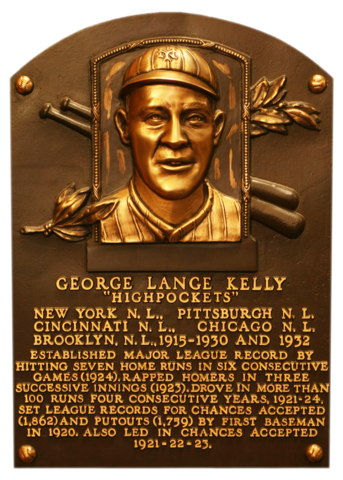
Stengel’s and Johnny Cooney’s careers keep intersecting: Cooney played for the Toledo Mud Hens during Stengel’s first managerial gig, then with the Brooklyn Dodgers, and both came back to Boston in 1938. Age is no factor for Cooney this season, who is serving as a player and coach. How is it he is a starting center fielder when guys like Brooklyn’s Pete Reiser are half his age? He is in shape, eats right, avoids tobacco and alcohol, and sleeps plenty. Former Dodger teammate Van Lingle Mungo said, “I think Cooney is the best outfielder I ever saw in my life or ever heard of. He’s not fast, but he doesn’t have to be. He’s just always there when a ball has to be caught.”
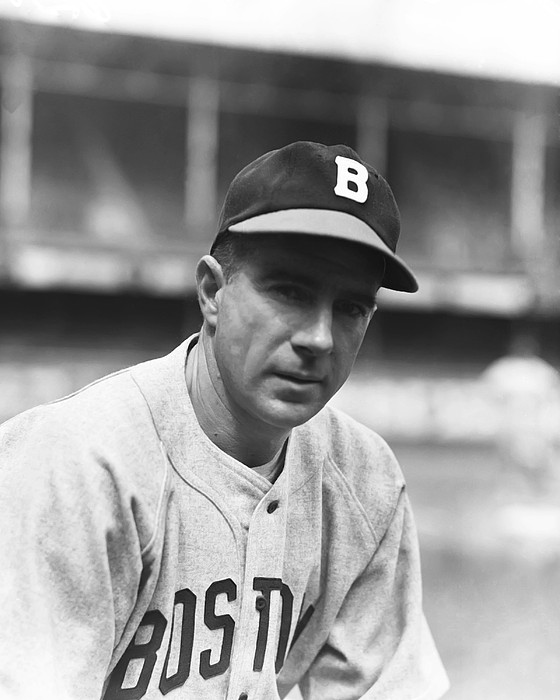
After last season Cooney received the Walter S. Barnes Trophy at the Boston baseball writers’ dinner for being the most valuable Boston player of 1940. This year he finishes second in batting average and leads the league in fielding percentage. He also serves as an assistant coach and as an umpire when the officiating crew gets socked in by weather off Cape Cod before the game.
The Chapel Hill Cloudbusters
Regarding the Braves first base competition: Buddy Hassett scores the job and will play this season with the Braves and 1942 with the Yankees before enlisting in the Navy. He plays for the Chapel Hill (N.C.) Cloudbusters during his time as an instructor for Naval aviator cadets before being serving as the athletic director aboard the aircraft carrier USS Bennington, where he supported the Iwo Jima and Okinawa invasions.
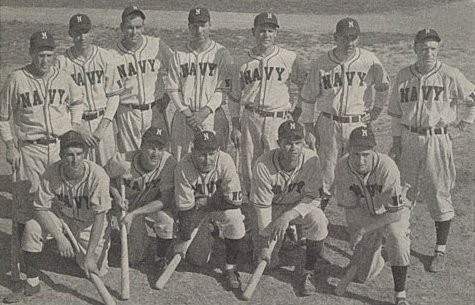
The Cloudbusters consisted of several former Major Leaguers-turned aviation cadets — most notably Ted Williams. During a charity game in 1943, the Cloudbusters beat a handpicked team of New York Yankees and Cleveland Indians, managed by Babe Ruth (who also pinch-hit), a game which we will certainly cover in the future. Other players include Hassett, his former teammate Buddy Gremp, who played 113 games as a backup first baseman for the Bees/Braves before his time in uniform. Johnny Sain was a rookie pitcher for the Braves in 1942 and after serving as a flight instructor at Corpus Christi, Texas, he would go on to win 20 or more games four times for Boston.
Johnny Pesky had a spectacular rookie season with the Red Sox in 1942, leading the league in hits with 205 and finishing third in MVP voting. After hanging up his Naval uniform, he picked right up where he left off, hitting 208 in 1946 and 207 in 1947. Had he not lost three prime seasons to the war, “Mr. Red Sox” would most likely be in the Hall of Fame. Originally named John Michael Paveskovich (his parents were Croatian immigrants), Pesky’s father was an officer in the Austro-Hungarian Navy.
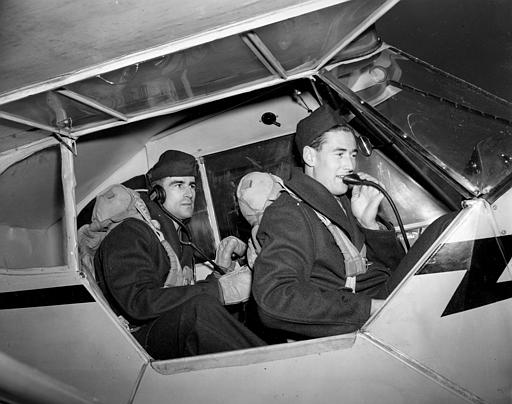
Joe Coleman played one game in 1942 for the Philadelphia A’s before joining the Navy. Coleman would play another nine seasons after serving in the Pacific Theater. Alex Sabo played five games with the Washington Senators in the 1930s. Pete Appleton enlisted in the Navy after 13 years in the big leagues, throwing another 23 innings as a 41-year-old after the war.
Chapel Hill’s football club (North Carolina Pre-Flight) was equally formidable: they were led by several future hall of fame coaches: Glenn Killinger, Johnny Vaught, Paul “Bear” Bryant, and Jim Crowley (one of Notre Dame’s legendary Four Horsemen), all now serving in the Navy. Another coach was Frank Kimbrough, whose brother John we discussed last week. NFL Hall of Fame quarterback Otto Graham was a cadet at Chapel Hill, playing quarterback for the team in 1944.
World War II college football rankings looked much different in 1944 than what we are used to today (final AP Poll from Dec. 9, 1944):
| 1 | Army | 9-0 |
| 2 | Ohio State | 9-0 |
| 3 | Randolph Field | 9-0 |
| 4 | Navy | 6-3 |
| 5 | Bainbridge Naval Training Station | 10-0 |
| 6 | Iowa Pre-Flight | 10-0 |
| 7 | USC | 7-0-2 |
| 8 | Michigan | 8-2 |
| 9 | Notre Dame | 8-2 |
| 10 | March Field | 7-0-2 |
| 11 | Duke | 6-4 |
| 12 | Tennessee | 7-0-1 |
| 13 | Georgia Tech | 8-2 |
| Norman Naval Air Station | 6-0 | |
| 15 | Illinois | 5-4-1 |
| 16 | El Toro Marines | 7-1 |
| 17 | Great Lakes Navy | 8-2 |
| 18 | Fort Pierce | 8-0 |
| 19 | St. Mary’s Pre-Flight | 4-4 |
| 20 | Second Air Force | 8-2-1 |
The Cloudbusters were ranked second in the nation after defeating Navy, which was picked to finish #1 in 1944. Camp Peary’s and 3rd Air Force’s squads also appeared in the Top 20 during the season.
Evening star. (Washington, D.C.), 22 Feb. 1941. Chronicling America: Historic American Newspapers. Lib. of Congress.
https://chroniclingamerica.loc.gov/lccn/sn83045462/1941-02-22/ed-1/
